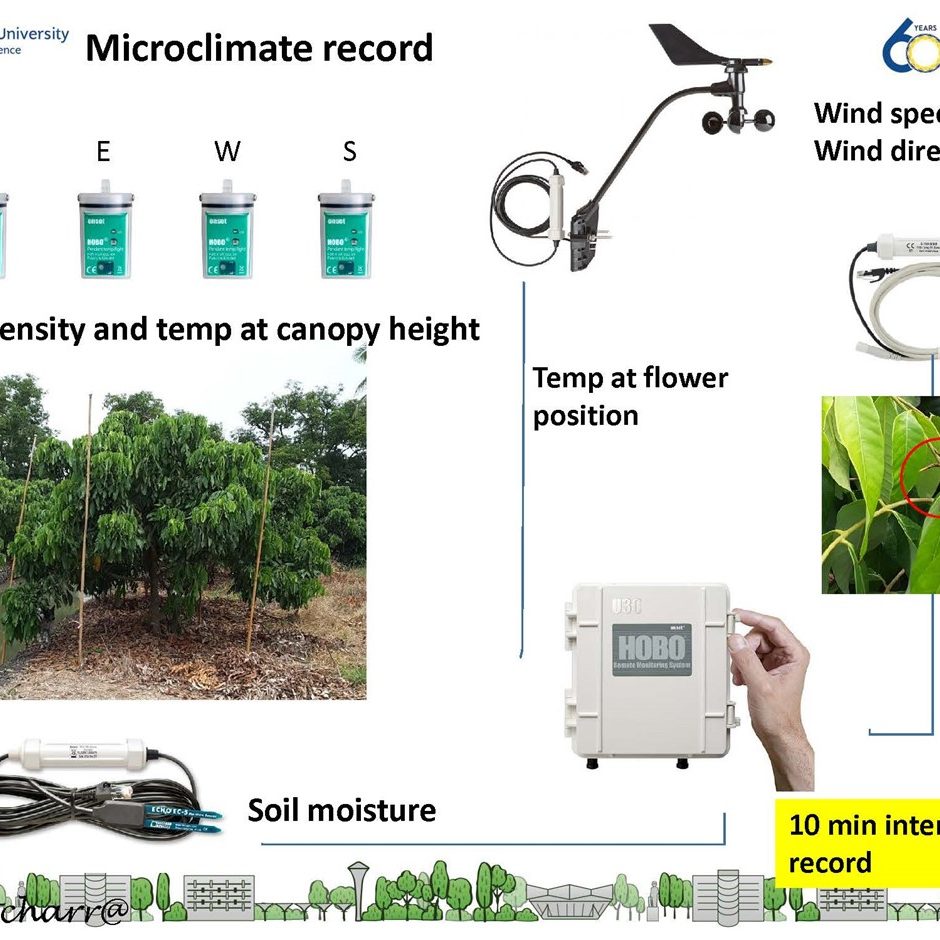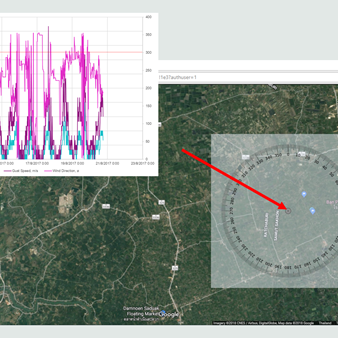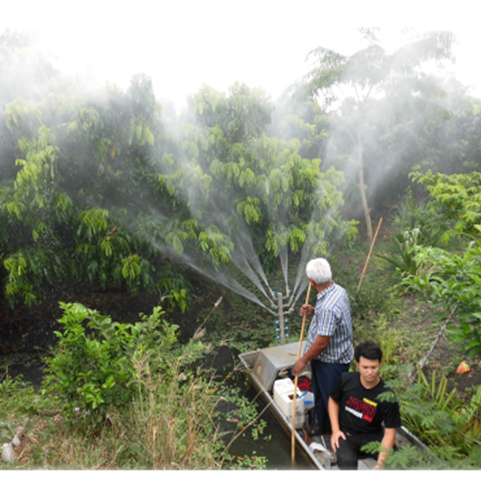Microclimate manipulation for sustainable off-season longan production
Highlight: This research was initiated from the longan growers who suffered from the effects of hot wind that caused 100% failure of off-season longan production at Samutsakhon province, Thailand. It is the first time for characterization of the hot wind using microclimate data.This research also invented the water showering method for cooling and modify microclimate characteristics of longan tree which can help the longan growers to successfully produce off-season premium grade longan during high peak of market price.
Researcher Name: Watcharra Chintakovid, Aussanee Pichakam, Charit Kammak, Nareenat Trisuwan
Years of execution: 2019-2022
Funder Name: This research was funded by The Thailand Research Fund.
Objectives: To investigate the phenomena of hot wind in the western region of Thailand. The effect of the hot wind on drying of longan flowers and inflorescence was firstly reported in Sumutsakhon Province, Thailand. This research was the first to report the characteristics of the hot wind. The research also included observations of impacts of the hot wind on growth of Longan tree for both vegetative and reproductive stages of growth. Manipulation of microclimate at the canopy of longan tree for fighting against hot wind was invented and transferred the technology for longan growers. Data of microclimate supported the warning system was also provided in website of Kanchanaburi Campus, Mahidol University.
Abstract
Off-season longan is an important commercial fruit crop at the alluvial plains of the central region in Thailand such as Sumutsakhon and Ratchaburi provinces. During the high demand season in late December and early February, flowers’ growth has to encounter great loss from climate changes namely “hot wind”. In order to monitor and evaluate the effect of “hot wind”, on flowers, the present experiment was undertaken in a longan orchard at Ban Phaeo districts, Samutsakhon. The results revealed that “hot wind”, occurring on July 11-12, 2017, has complex characteristics. There was a sudden change in microclimate and wind from the northwestern (300-330° in a clockwise direction from the North) was detected prior to a suddenly increased air temperature, decreased relative humidity, increased VPD (vapor-pressure deficit), while the soil moisture content decreased. After that damage in flowers was observed, especially in young inflorescences with a size of below 5 cm long, and thus influenced their off-season productivity. The major evidence occurred during July to September. Significant decrease in vegetative growth of new flush and young leaves occurred, and then the transformation of flower buds to vegetative buds was about 80%. New flushes stopped their growth, after that some damaged flower buds showed the transformation returning to vegetative phase. The above information could be a key playing an important role in establishment of performance or strategies to alleviate the “hot wind” in the future. For investigation of effect of the hot wind on growth performance of longan, the studied site was divided into two plots corresponding with the two different times of KClO3 application: early May (plot 1) and late June (plot 2). The microclimate data showed logged events of “hot wind” which had distinct characters of high air temperature and low relative humidity. Shoots of longan trees in plot 1 showed a negative effect of “hot wind” while it caused dry-off in young flowers of plot 2. Growth rate decreased in both plots. Shoot length and the number of compound leaves in plot 2 were low and it showed incomplete flushing. The percentage of flowering was low leading to fruit yield reduction. The knowledge about the relationship between environment and tree performances will be useful for development of appropriate technology to increase off-season longan production efficiency.



